|
Dear Friend,
I’m back home in eastern Connecticut after a busy week in Washington passing bipartisan legislation to lower cost for families. Here to provide you with a rundown of those bills and updates on some important issues in eastern Connecticut.
An Update on Medicare Part B Premiums
First, I want to provide an update on an important issue for seniors: Medicare Part B monthly premiums. This year, Medicare Part B beneficiaries saw their monthly premiums rise by 14% — from $148.50 to $170.10 each month. That was the largest increase in the history of the program, and it was fueled by projected costs attributable to the newly authorized drug Aduhelm. As you probably are aware, Biogen Pharmaceuticals—who owns the patent on Aduhelm—subsequently cut its price in half after the Medicare Part B price hike was announced. Ever since then, I’ve been leading a coalition of over 30 Representatives to press the Department of Health and Human Services (HHS) and HHS Secretary Xavier Bacerra to adjust the Part B premium downward in light of the drastically reduced cost projection. In January, I led a letter urging the department to re-evaluate the price hike, in February I penned an op-ed on the subject for the Hill newspaper, and as we waited for an update from HHS I continued to press Sec. Becerra for more information. You can watch more below.
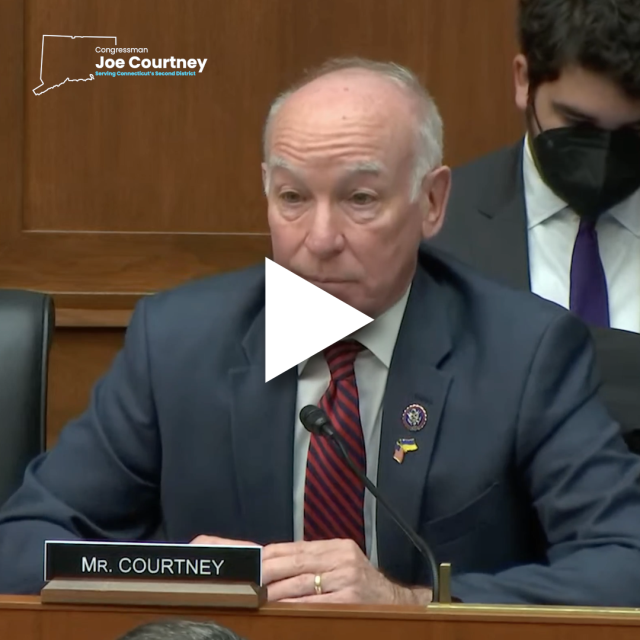 |
| In April, Rep. Courtney continued to press HHS Secretary Becerra for an update on giving seniors a fair deal on Medicare Part B premiums. Click here to watch |
On May 27th, HHS released a report on its reexamination of Part B premiums. Fundamentally, it acknowledges the validity of my claim that Medicare Part B spending has been lower-than-expected now that the price of Aduhelm was reduced. However, given the fact that six months has already lapsed in the Premium year, complicating a Premium adjustment calculation, HHS has determined that the cost savings will be passed on to Medicare Part B participants by lowering their 2023 premiums. This is an unprecedented move from HHS, it’s the right thing to do, and it’s going to lower costs and provide tangible, out-of-pocket relief for millions of Americans starting six months from now, and through 2023. At a time when the cost of living is too high for many people, no one should have been burdened by unfair Medicare Part B pricing in the first place, but I’m glad to see this positive result for eastern Connecticut seniors. For more information, give my Norwich office a call at (860) 886-0139.
What Has the American Rescue Plan Meant for Stonington?
Like other communities across the U.S., our towns were up against steep and unforeseen budget deficits when the pandemic hit. Businesses were closed, and the same tax revenues our towns rely on to fund our fire houses and police departments, our schools, our housing programs, and other public service was no longer available. That’s why the American Rescue Plan directed relief funding to our towns—to help make up for the lost revenue, and to keep essential services and projects online while we get going again.
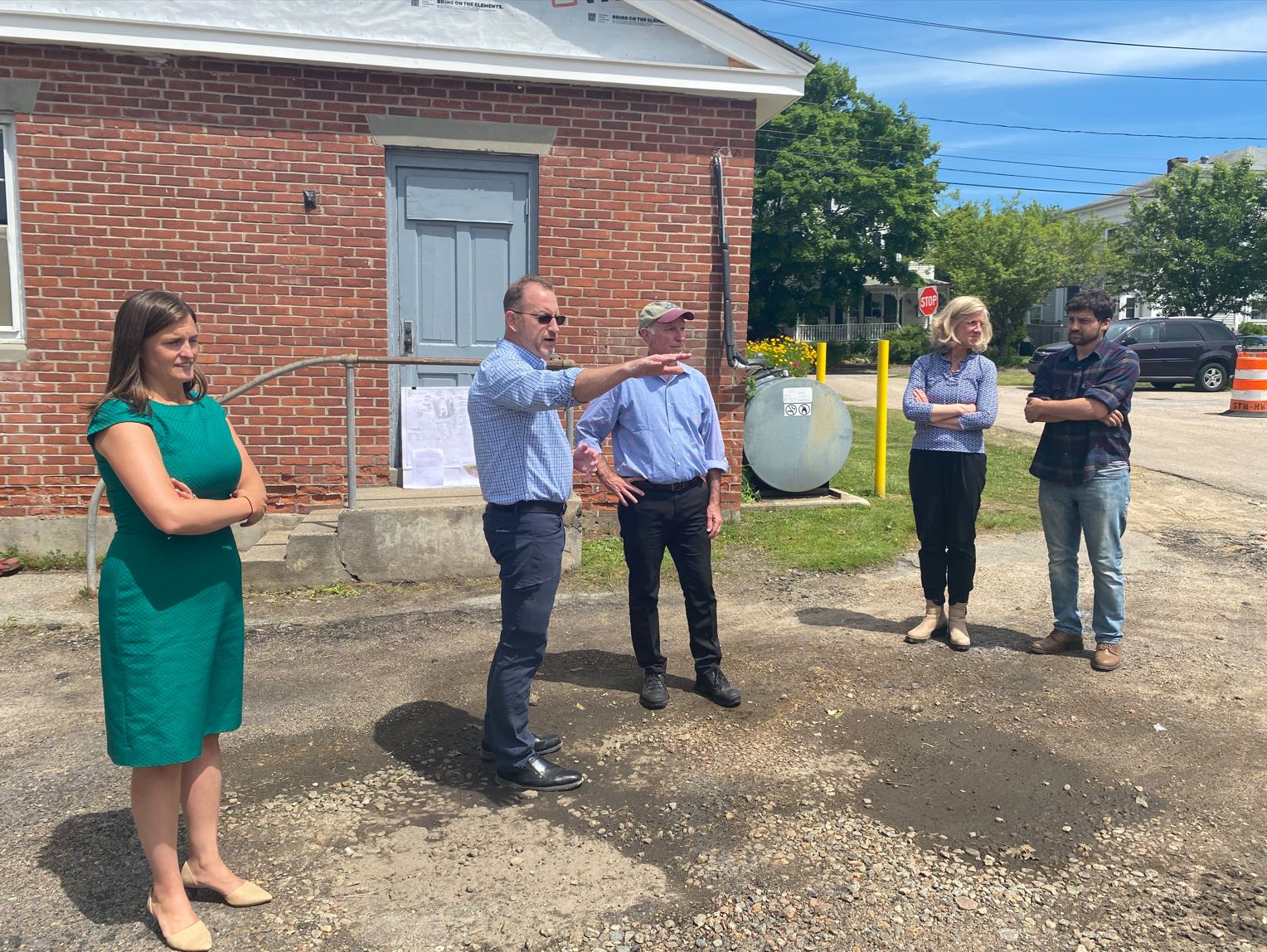 |
| Courtney joined (left to right) Stonington First Selectman Danielle Chesebrough, Chris Greenlaw (Town Engineer), Barbara McKrell (Director of Public Works), and others for a tour to see how Stonington has utilized their portion of American Rescue Plan relief funding |
Stonington is set to receive a total of over $3 million through the Rescue Plan, and so far, the town has identified more than $1.5 million of it to support a range of different efforts—to support local mental health services, kick-start a new housing program, improve local recreation facilities, and more. These are the types of things that our towns simply couldn’t have done without help through the Rescue Plan. Last Friday, I got together with Stonington First Selectman Danielle Chesebrough, Town Engineer Christopher Greenlaw, and several others for a tour of how they’ve put this relief funding to work in Stonington so far—check it out below.
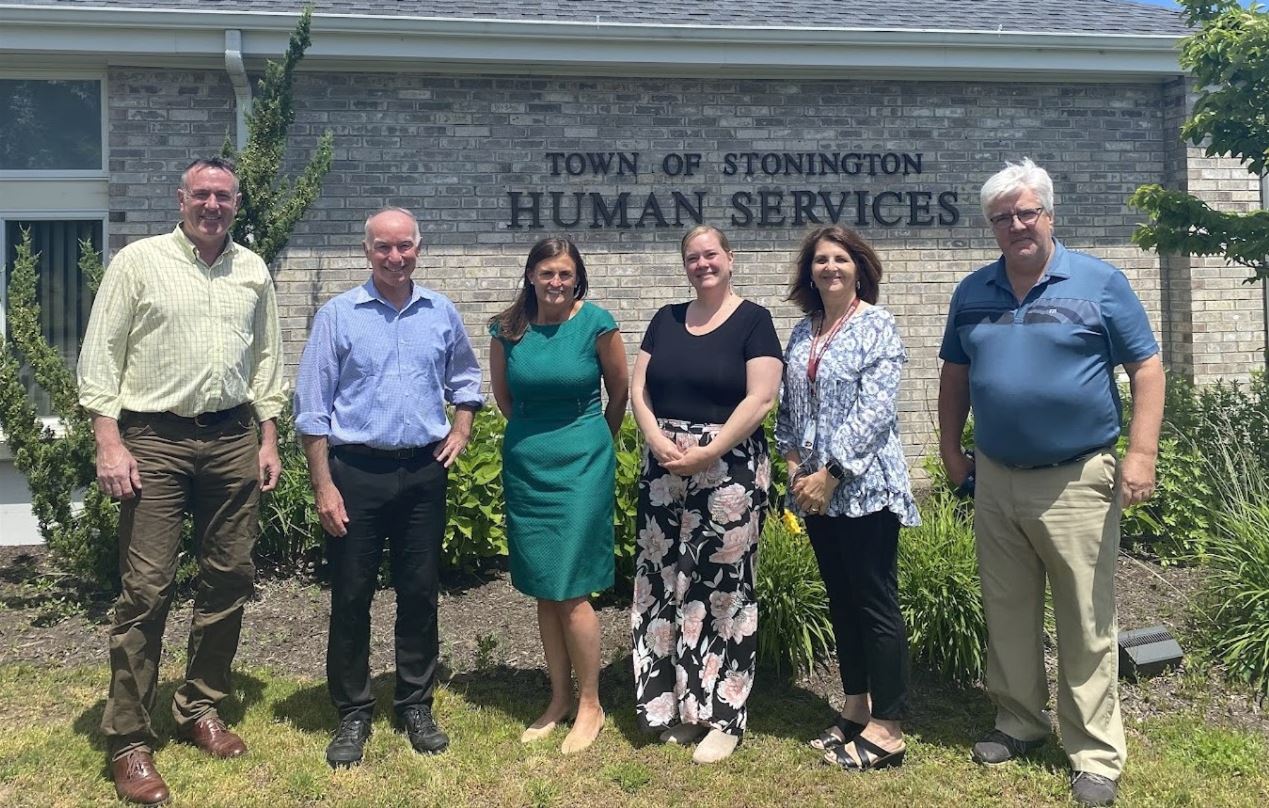 |
| Thanks to the American Rescue Plan, the Town of Stonington was able to hire a new part-time counselor to support mental health services at Stonington Human Services ($22,480). Courtney met with Tim O'Brien (Stonington Board of Finance) (left) and Stonington Human Services' Amanda Johnson (center) and Cynthia Gardiner (center right) last week to discuss the impact of the relief funding. |
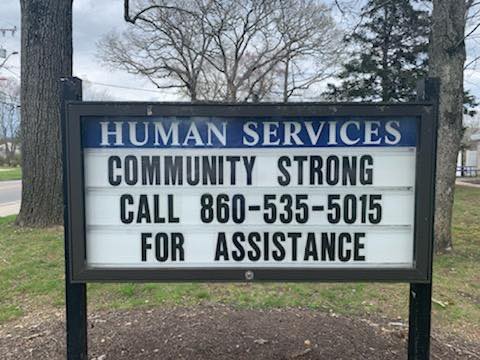 |
| Stonington is also using their American Rescue Plan relief funding to start the brand-new Stonington Housing Fund ($500,000). The housing pilot program is operated by Stonington Human Services, and will help offer greater access to quality, affordable housing for workers and families in Stonington. |
 |
| The Town of Stonington is also utilizing American Rescue Plan funds to reconstruct the town’s public tennis courts ($500,000). The courts will be re-paved and improved, and will have added lights and wind screens. Courtney met with Richard Ward (Recreation Administrator) (center right) to discuss the new improvements. |
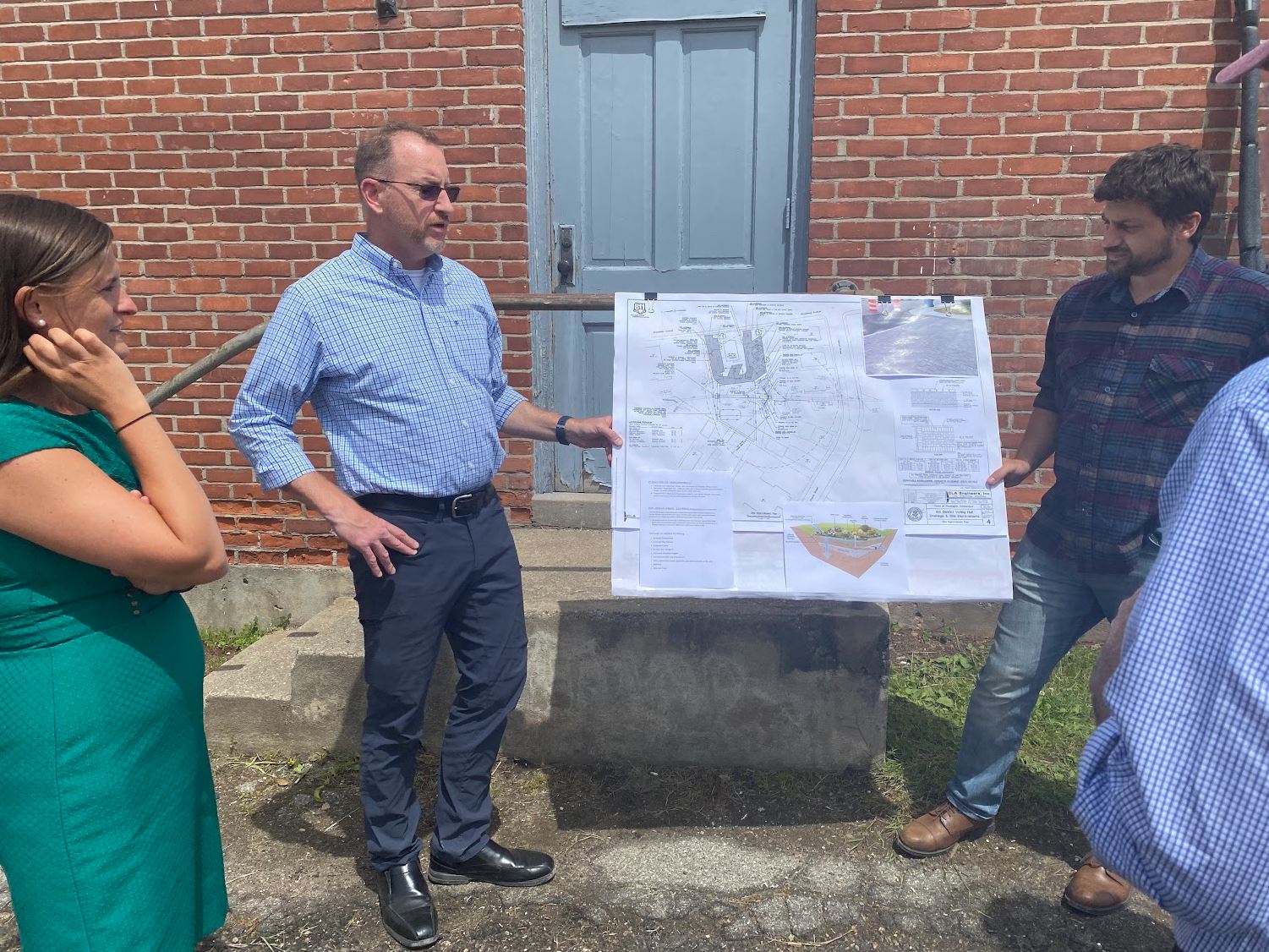 |
| With relief funding through the American Rescue Plan, the Town of Stonington will be able to install a new, state-of-the-art flood control system at the 4th District Voting Hall ($150,000)—an investment that will keep the building safe and in-use for years to come. Town Engineer Chris Greenlaw (center left) gave an overview of the work on last week's tour. |
 |
| The Town of Stonington has needed a new Salt Dome for some time now—the Department of Public Works’ current Salt Dome is weathered and deteriorating. Using American Rescue Plan funding, the Town will now finally be able to replace the salt dome ($600,000), another investment that will pay dividends in the long run. |
None of our towns would have been able to move forward on projects like these if it wasn’t for the American Rescue Plan. Stonington has done a good job in putting these resources to work, and my office is going to be providing similar breakdowns on how each of our towns have utilized this funding.
An Update on Westbrook Dredging
So much of our economy here in eastern Connecticut flows through our waterways, and it’s critical that we keep them in full operational capacity for all of the boat traffic on them. In the Infrastructure Investment and Jobs Act (the IIJA, the new Infrastructure Law), the Army Corps of Engineers received serious funding to take on a backlog of waterway construction projects–including $760,000 to complete dredging work on the Patchogue River in Westbrook. This kind of work might not be flashy, but it’s critical for the success and growth of our local economy, and it’s often too costly for our towns to take on by themselves.
 |
| Sand buildup along the sides of the Patchogue narrowed the river and made it difficult for larger boats to come inland from the Sound |
The Patchogue provides access to the Long Island Sound, and all sorts of people rely on that access—local marinas and repair shops, bait and tackle stores, sailing instructors, fishing boats, and lots more. Build up of sand along the sides of the Patchogue had narrowed the river and made it difficult for large boats to come inland from the Sound. In preparation for boating season, we needed to get this dredging work completed to allow for sailboats and larger power boats to use the channel entering the river. I’m happy to announce that last week, we celebrated the long-awaited completion of dredging work in Westbrook.
 |
| Last week, Rep. Courtney joined local marina owners and Westbrook First Selectman John Hall to celebrate the completion of dredging work along the Patchogue River |
This infrastructure project is one of many taking place right now in eastern Connecticut thanks to the IIJA. We passed the bill last year to improve transit, grow local economies, and create jobs. That’s what we’re seeing across Connecticut’s second district and will continue to see as funding is rolled out over the next five years. Last week in the House, we also reauthorized the Water Resources Development Act (WRDA), which includes a provision I authored to authorize future funding for water infrastructure projects in Hebron, Norwich and Bozrah, and Windham. Learn more about WRDA here.
Taking Action to Lower Costs for Workers & Families
Lowering everyday costs for workers and families has got to be job number one in Congress. It’s true that the entire world is dealing with inflated food and energy prices right now, but there are still steps we can take to control what’s in our own backyard and to reign in prices here at home. The House came together this week to pass two bills that would help do that, and both passed with bipartisan support. First, on Monday, I presided over the House floor as we passed the Ocean Shipping Reform Act—a bipartisan bill that will help crack down on international shipping companies who are needlessly jacking up rates, slowing down ports, and preventing lots of our farmers and manufacturers from bringing their goods to market. There’s no doubt that some international oil and shipping companies are taking advantage of consumers right now, and in Congress we’re united to put an end to it. Read more about the bill here.
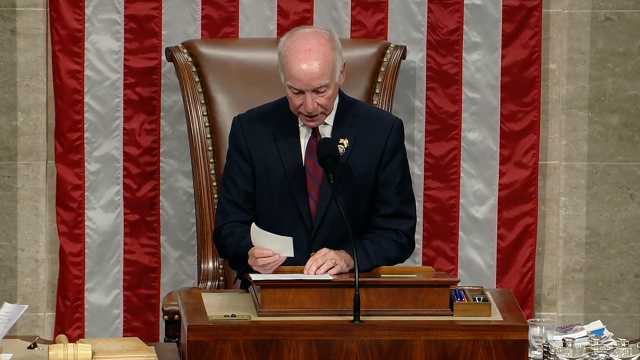 |
| On Monday, Courtney voted to pass the Ocean Shipping Reform Act—click here to read more about the bill |
One of the most immediate and free-market ways we can tamp down costs is by increasing competition among producers and choice among consumers. On Thursday, we passed the Lower Food and Fuel Costs Act—a bipartisan bill to do just that. Provisions within this bill would provide a huge boost to America’s farmers by cutting their overhead costs on fertilizer, which has skyrocketed in price directly as a result of the war in Ukraine. These savings would be available to all sorts of eastern Connecticut farmers, and to others nationwide. The bill would also help to increase competition in the meat and poultry industry by cracking down on anti-competitive practices. Both provisions will help lower costs for farmers and create more competition among processors, which in turn will help lower prices at the grocery store for American families.
The Lower Food and Fuel Costs Act also promotes energy independence by expanding the use of homegrown American biofuel—gasoline containing 15% ethanol (also known as E-15 or Unleaded 88). This fuel costs on-average $0.40 less per gallon, it burns cleaner than regular gas and emits less carbon pollution, and next-generation biofuels infrastructure can make it even more efficient for farmers to produce. The Lower Food and Fuel Costs Act would give Americans the choice of buying this type of fuel year-round, giving more consumers the choice to fill up with cheaper E-15. Read more about the bill here.

Celebrating Juneteenth
I hope everyone is looking forward to Juneteenth celebrations this weekend. Today, I attended a ceremony and flag raising marking the holiday in Norwich—the first city in Connecticut to formally recognize Juneteenth back in 1989—and tomorrow I’ll be at the celebration in Hebron. Hope to see you there!
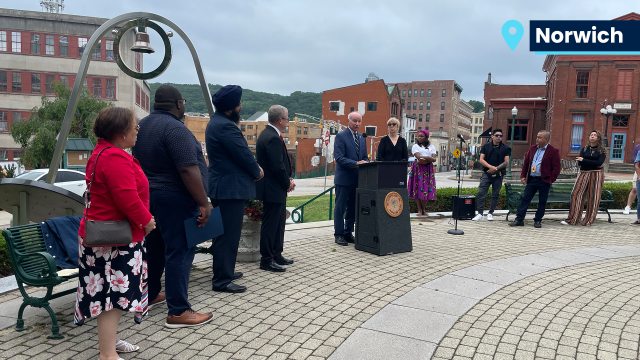 |
| Today, Rep. Courtney joined Norwich town officials and the Norwich Branch of the NAACP for Juneteenth Ceremony |
Juneteenth is a day for both reflection and celebration. It marks the day in 1865 when enslaved African Americans in Texas received news of emancipation, and when the freedom promised in our nation’s doctrine was finally granted to all Black Americans. 157 years later, we continue to remember this most significant period in our country’s history, and commemorate the fulfillment of America’s promise to all its citizens. Last year, I was proud to support bipartisan legislation officially making Juneteenth a federal holiday. This year, whether it’s your first time celebrating or part of a long tradition of coming together with family and friends, let’s all join in celebrating this American holiday.
Sincerely,

Joe Courtney
Member of Congress
|